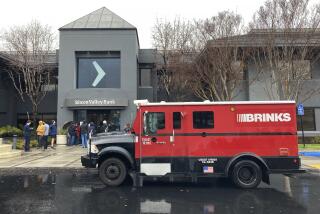Good News and Challenges
There’s plenty for Ventura County to celebrate in the newly released Census 2000 figures, including upward trends in average income, ethnic diversity and home prices. But too much success can be as problematic as too little.
Now is the time to take steps to ensure that the county does not become an enclave exclusively for the upper classes, with lower-paid workers forced to commute long distances from more affordable housing elsewhere. A healthy economy and quality of life depend on striking a sustainable balance of job types and housing options.
During the 1990s, Ventura County attracted tens of thousands of urban professionals from the Los Angeles Basin, hundreds of high-tech immigrants from Asia and thousands of immigrants from Mexico, according to state and federal figures.
While California’s average per-person income increased by $3,080 to $31,420 during the 1990s, Ventura County’s average grew nearly twice as much, jumping by $5,381 to $32,781. The county’s median family income, about $50,000 in 1990, rose to $63,100 in 1998 compared to a California median of $58,500.
Driving the trend toward affluence was the expansion of high-tech and biotech firms in the east county and the Ventura Freeway commercial corridor in the west.
On average, residents who moved to the county in recent years were far wealthier than those who moved away, a Times analysis of Internal Revenue Service statistics shows. The typical household income of residents moving into Ventura County from 1992 to 1996 was about $41,000, compared with incomes of about $35,000 for departing households, adding up to an income gain of $136 million over the five years.
As the influx of well-paid new arrivals ran into a county increasingly strict about where and how it allows new development, home prices climbed to an all-time high. By decade’s end the typical Ventura County house cost $259,000, exceeding even the inflated home prices of the late ‘80s.
Construction of houses, business parks and office buildings took place at the fastest pace since the county’s construction peak in the 1980s. In light of anti-sprawl measures such as Save Open Space and Agricultural Resources (SOAR), much of the county’s growth in the next two decades will need to take place within the already urbanized areas.
Numerous conferences and public hearings already have been held to discuss how this mandate can coexist with a population that grew by nearly 13%, or 84,181 residents, over the previous decade--a growth rate almost as fast as California overall.
Ventura County’s growing prosperity should be viewed as an opportunity to improve its communities’ economic balance and sustainability, not as an excuse to leave behind those who have not yet shared in the good fortune.
More to Read
Start your day right
Sign up for Essential California for news, features and recommendations from the L.A. Times and beyond in your inbox six days a week.
You may occasionally receive promotional content from the Los Angeles Times.






